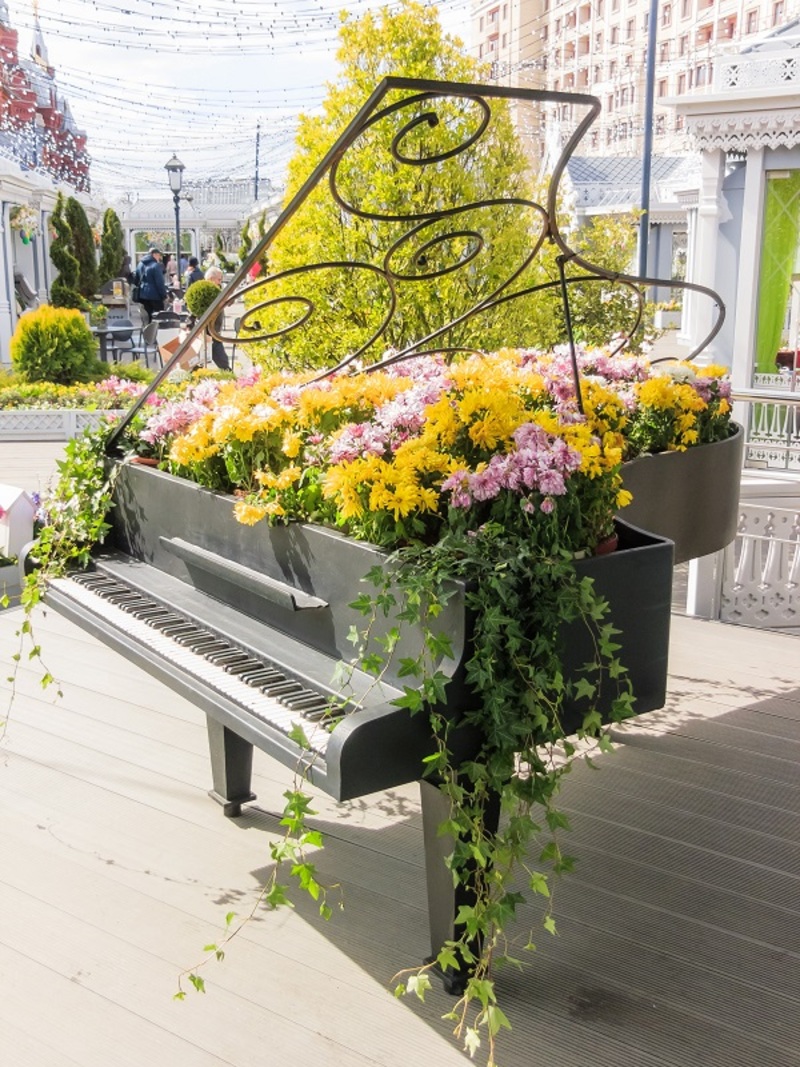Quick and Simple: 3 Techniques to Prolong Your Flowers' Beauty
Posted on 21/08/2025
Quick and Simple: 3 Techniques to Prolong Your Flowers' Beauty
Everyone delights in the sight of fresh, vibrant flowers gracing their home, but too often that exquisite beauty fades all too quickly. The good news is, with just a few quick and simple techniques, you can greatly extend your flowers' beauty and keep your arrangements looking striking for longer. This comprehensive guide explores proven methods that help anyone--from novice to seasoned florist--maximize the life of their floral bouquets. Get ready to embrace fresh blooms that last!
Why Does the Beauty of Flowers Fade?
Fresh-cut flowers are a beloved touch for interiors and special occasions alike. Yet, they start to decline as soon as they're separated from their roots. Flowers rely on their stems to draw up water and nutrients, and once cut, their exposure to air, bacteria, and environmental stressors accelerates wilting. Understanding what causes flowers to age quickly is vital to efficiently prolong the life of your flowers. Let's explore why:
- Loss of Hydration: Stems can become blocked, making water uptake difficult.
- Bacterial Growth: Stagnant, untreated water can breed bacteria that inhibit water absorption.
- Lack of Nutrients: Once cut, flowers are deprived of their natural nutrient supply.
- Environmental Stressors: Heat, sunlight, and drafts can accelerate dehydration and wilting.
But don't worry--these are all challenges you can tackle with the right flower care techniques!

Technique 1: Master the Art of Proper Flower Preparation
Cut and Condition for Maximum Longevity
One of the most overlooked but absolutely vital steps to prolonging flowers' freshness is the careful preparation of each stem before it ever touches water. Here's how you can easily do it:
- Trim Stems at an Angle: Use sharp, clean scissors or a knife to trim 1-2 inches off the stems at a 45-degree angle. This increases the surface area for water absorption and helps prevent the stem from sitting flat on the vase bottom, which can restrict water uptake.
- Remove Foliage Below the Water Line: Leaves left under water quickly rot and foster bacteria growth. Always strip foliage that would be submerged.
- Immediate Hydration: After cutting, place stems in lukewarm water right away. The temperature helps wake the flower cells and encourages them to drink.
- Avoid Crushing Stems: Ensure you use a sharp tool to avoid damaging vascular tissue, which can limit water entry.
By following these simple preparation steps, you offer your flowers the best start for extended vitality and prolong your bouquet's beauty.
Technique 2: Perfect the Vase Water Formula
Fresh Water, Flower Food, and a Clean Container
What you put in your flower vase can make a world of difference. To keep flowers fresh longer, it's essential to address water quality and nourishment:
- Change the Water Regularly: Refresh the water every two days. Dump out old water, rinse the vase, and refill with clean, room-temperature water.
- Add Flower Food: The little packets that come with florist bouquets are excellent and specifically formulated to extend cut flowers' beauty. It typically contains sugars for nourishment, acidifiers for pH balance, and bleach to inhibit microbial growth.
- DIY Flower Food Solution: If you run out, you can make your own. Combine 2 tablespoons of lemon juice, 1 tablespoon of sugar, and 1/2 teaspoon of household bleach per quart of water. This keeps bacteria at bay while feeding your blooms.
- Keep the Vase Clean: Wash the vase thoroughly before use and with each water change. Bacteria hiding in dirty containers is a prime cause of wilt and rot.
These water-care practices are crucial for anyone wishing to prolong the beauty of their vase flowers and showcase bouquets at their finest.
Technique 3: Create the Optimal Environment for Lasting Blooms
Placement and Environmental Control
Even the most precisely-cut and well-fed flowers can wilt if displayed in the wrong environment. Strategic placement dramatically impacts how your flowers age. Here's what every flower lover should know:
- Keep Away from Direct Sunlight and Heat: Sunbeams and heat quickly dehydrate petals and speed up fading. Place arrangements in a cool, shaded spot out of direct sun.
- Avoid Drafts and Appliances: Breezes, vents, and heat from kitchen appliances can strip moisture, so pick a location away from air currents and heat sources.
- Watch Out for Ripening Fruit: Many fruits emit ethylene gas, which can cause premature wilting. Keep your floral displays away from fruit bowls for maximum longevity.
As a bonus step, you can mist delicate blooms with water to increase humidity, especially in dry climates--just be careful not to overdo it. With these environmental tweaks, you can prolong your flowers' lifespan with ease.
Frequently Asked Questions About Keeping Flowers Fresh
What is the best temperature for cut flowers?
Cooler is better! Most blooms thrive in temperatures between 65-72?F (18-22?C). Fluctuations and excessive heat speed up the aging process.
How often should I recut flower stems?
Every 2-3 days is ideal. Each stem can develop a seal on the cut end or accumulate bacteria that restricts water flow. Regular recutting freshens water pathways.
Should I remove wilting blooms from the arrangement?
Absolutely. Spent flowers can release ethylene gas and encourage bacteria, causing others to fade faster. Remove them promptly to help the rest last longer.
Does aspirin, soda, or pennies in the water help?
The evidence is mixed. Some homemade remedies can provide marginal benefit, but nothing matches the effectiveness of commercial or properly-composed DIY flower food for truly prolonging your flowers' freshness.
Extra Tips for Flower Lovers: Go the Extra Mile!
Once you've got the basics down, these small enhancements can help further extend the beauty of your bouquets:
- Refrigerate Overnight: If possible, place your flowers in the fridge overnight (away from fruit). This considerably slows wilting for special occasions.
- Use a Gentle Touch: When arranging or moving flowers, handle stems gently. Avoid bruising petals, as damaged tissue degrades fast.
- Refresh the Arrangement: As flowers age, rearrange and re-trim stems to maintain a fresh appearance.
Practicing these little acts of care can make a noticeable difference and help you display long-lasting vase flowers you'll be proud of.

Best Types of Flowers for Long-Lasting Bouquets
Some flowers naturally last longer than others, even with perfect care. When you want an arrangement that'll hold up beautifully, consider these reliable long-lasting blooms:
- Alstroemeria
- Chrysanthemums
- Carnations
- Anthurium
- Orchids
- Sunflowers
- Lilies
Mixing a few of these with more delicate varieties is a smart way to anchor your bouquet's staying power. Just remember, every flower benefits from attentive care to reach its peak lifespan.
Conclusion: Prolong Flowers' Beauty with a Touch of Care
Keeping flowers fresh and mesmerizing doesn't require complicated science--it's all about quick and simple steps to prolong their beauty. With the right stem preparation, vase hygiene, nourishment, and thoughtful placement, your flowers will reward you with dazzling color for as long as possible. Make these practical methods part of your routine, and every bouquet will be a joy to behold, day after day.
Ready to transform your flower care? Share your own tips for extending flower life in the comments below and let your next bouquet bloom brighter and longer than ever!
Latest Posts
Best Flower Shops in [POSTCODE/NEIGHBOURHOOD] for Every Occasion
How to Choose Wedding Flowers in [NEIGHBOURHOOD/BOROUGH]
Quick and Simple: 3 Techniques to Prolong Your Flowers' Beauty





